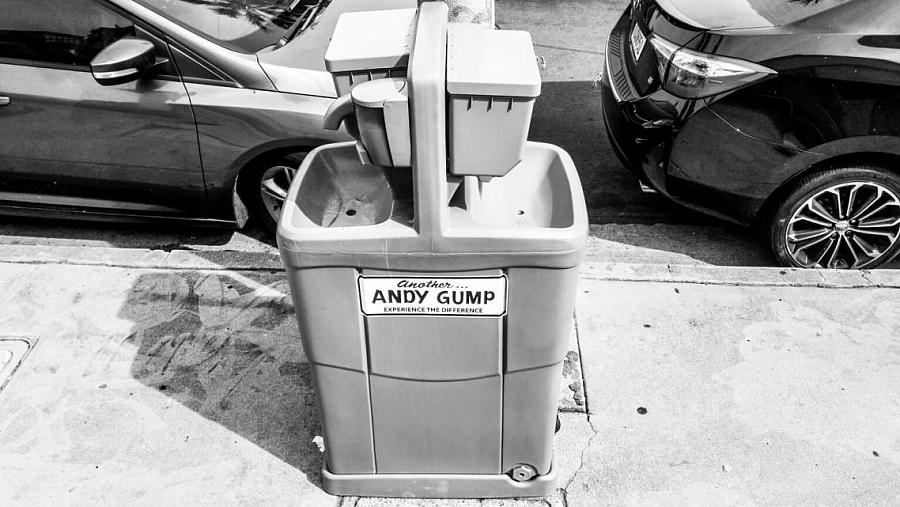How community-centered reporting on hygiene stations for LA’s unhoused led to change

(Photo by Lexis Olivier-Ray/L.A. Taco)
When the pandemic first hit, Lexis-Olivier Ray began seeing handwashing stations pop up around Los Angeles neighborhoods. It didn’t take long for him to notice that the stations, advertised by city leaders as a means of halting the spread of COVID-19 among the unhoused community, were not being maintained.
So, Ray began to document their condition — and what started as photos shared to Twitter became a string of accountability stories for L.A. TACO that eventually led to significant change.
“I kind of became known as the ‘handwashing station guy,’ so when my story was actually published, there were a lot of people that had been following my tweets,” Ray told journalists at the 2022 Data Fellowship on Monday. “It helped with getting more tips and people connecting with me because they knew I was deeply invested.”
Ray, who is now an investigative reporter at the nonprofit newsroom L.A. TACO, took part in the Center for Health Journalism’s 2020 Data Fellowship and received an engagement grant. He decided to apply for the fellowship after receiving exclusive data from another reporter that appeared to show just how neglected many of the handwashing stations were.
From the beginning, he knew that he wanted to foreground the experiences of those most affected, which is where his engagement efforts kicked in.
He initially considered hosting a town hall with unhoused residents who relied on the handwashing stations and city officials. Bute changed his approach after getting feedback from local community-based organizations that work regularly with the unhoused. Instead, he took to the streets with a table, snacks, fliers and a phone charging station to invite unhoused people to share their stories.
“At first, I was kind of uneasy doing engagement, because it felt kind of like activism, but I think it's really about reaching the audience that has been impacted by what you're reporting on and giving them useful information,” Ray said.
During the tabling events, he made it clear to folks that he was there to listen. And many people felt inclined to share.
He also made sure to find ways to stay in touch with people he contacted, and followed up with information that could help them. Ray used the texting service Subtext that was crafted for journalists to both send out updates on his project and receive tips from the community.
By marrying community engagement and data skills, Ray revealed that the city had been paying thousands to vendors who were not maintaining hand washing stations, leaving an already vulnerable population without access to basic hygiene.
Shortly after his reporting, the city “quietly and abruptly” removed all handwashing stations from Los Angeles streets. Ray got tips about the removal of handwashing stations through the texting service, leading him to report on the Los Angeles mayor’s decision to quietly remove the stations as opposed to fixing the issues with them – a decision city council hadn’t known about, according to Ray.
Ray quickly began following up with sources to share how the hasty decision made it even more difficult for unhoused people to maintain their health and hygiene.
Ultimately, his commitment to following up and keeping those most affected at the center of his reporting led to the city’s decision to reinstate 150 of the handwashing stations, adding bathrooms alongside every station, and requiring cleaning vendors working for the city to fill out daily reports.
That was more than a year ago. And he has continued to report on the city’s slow rollout of their updated program.
“There was such a need for more information and people were just so happy because it was obvious I was putting a lot of effort into this and they’ve been really receptive,” Ray said. “People knew I was there to listen.”
